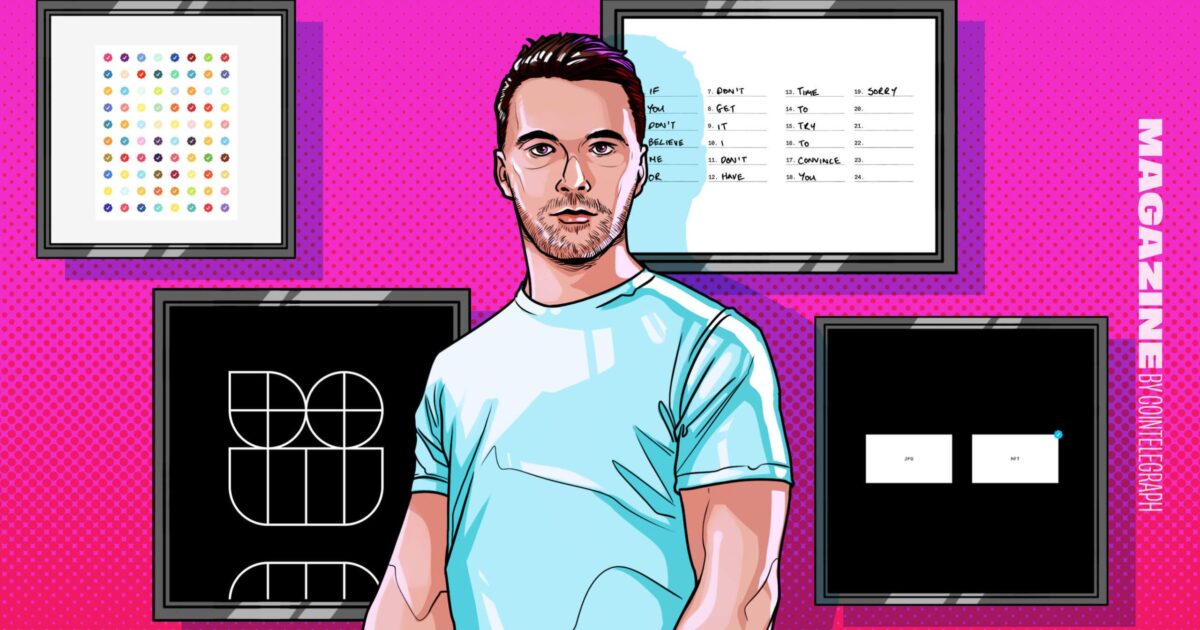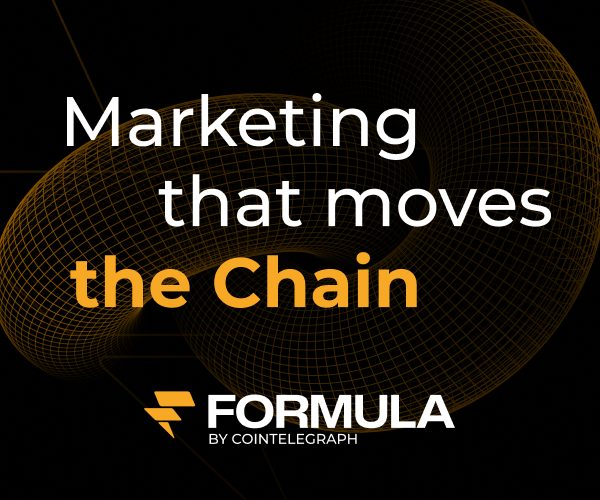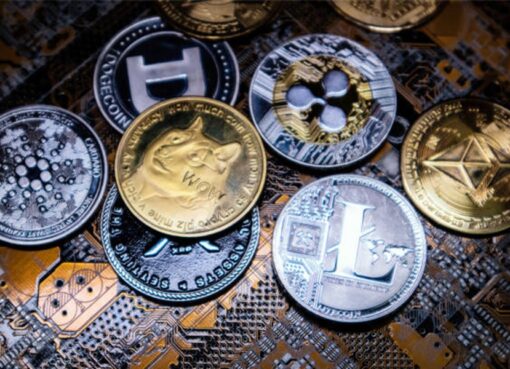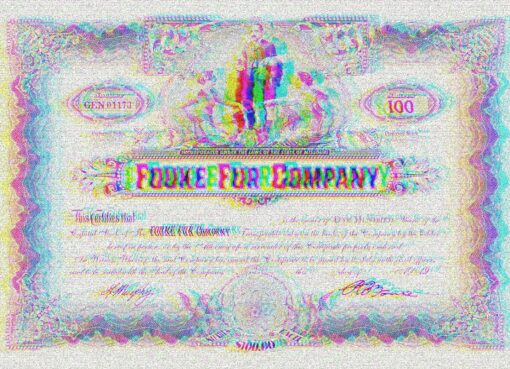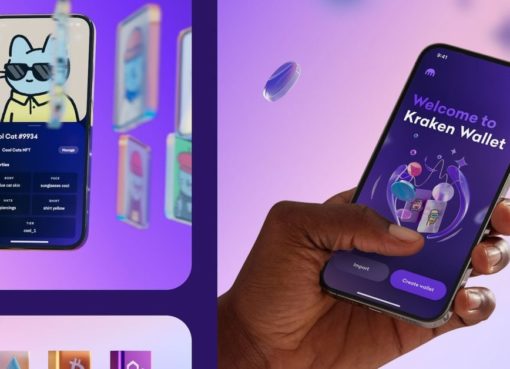Before Jack Butcher became a household name in the NFT ecosystem — before Checks, before Opepen, before his landmark 74 ETH ($123,500) sale in 2021 — he was just a designer chasing clarity. Not hype. Not headlines. Just clarity.
Butcher’s journey didn’t start in the meme coin trenches. It began in the agencies of London and New York where he cut his teeth as a commercial designer.
“I bounced around the agency scene for about 10 years. I basically worked in every commercial application of design you can think of,” Butcher says.
His agency grind eventually led him to build his own business, Visualize Value, known for its minimalist brand turned art studio that would go on to reshape how the internet thinks about ideas. Many of his visuals were even included in the The Almanack of Naval Ravikant book.
Butcher’s first interaction with crypto dates back to 2017 when he created blockchain explainer decks for clients at Visualize Value. But it wasn’t until March 2021 that he minted his first NFT on Foundation, a moment he still recalls vividly.
“I always refer to it as that 56k modem moment. Minting your first piece and seeing it arrive there underneath your name. It just felt like a moment in internet history.”

Six months prior to minting Chisel, the UK born Butcher recalls being somewhat dismissive at the NFT space. His perspective shifted when an NFT collector, already a fan of Visualize Value, reached out wanting to own a digital version of his work.
“I was sent a link to OpenSea six or so months before and was like, what is this? It did not capture my attention at all. There was nothing on there that was interesting to me. I just had no idea what I was looking at and clicked out of it quickly,” he says.
But the collector persisted. “He messaged me and said, ‘I would love to collect your work.’ I replied, ‘Sorry, man, I can’t print white ink on black paper. I’ve tried, it’s a nightmare.’”
Jack Butcher grapples with digital ownership
Butcher credits the team at Foundation for also assisting in helping him change his mind about selling digital art with its beautifully presented UX at the time.
His early works, particularly many of his 1-of-1 NFTs, showed him grappling with ideas around digital ownership.
“A lot of my early pieces are trying to describe the mechanics that make it possible for people to own and trade digital property. As an artist, being able to make the artwork the product, rather than a marketing system for some other product or service was a game changer,” Butcher says.
That change crystallized with NFTs, Explained, a 1-of-1 that sold for 74 ETH in March 2021. It encapsulated the design philosophy he’d been refining for years. “A lot of the genesis of the stuff I’m doing now is kind of in that piece,” Butcher says.


Jack Butcher and the Naval Effect
One of the most pivotal influences on Jack Butcher’s creative evolution wasn’t another designer, it was tech philosopher and investor Naval Ravikant. “That was a series of massive unlocks in my mind,” Butcher recalls of initially stumbling upon Naval’s now iconic tweet thread How to Get Rich (without getting lucky).
At the time, Butcher was running his own agency but feeling boxed in by the limitations of traditional client work. But Naval’s mental models had a profound effect. They offered a lens for seeing the internet as leverage, where code, content, and capital worked around the clock.
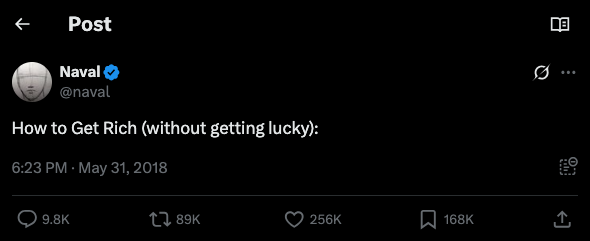

Inspired, Butcher began visualizing ideas from the thread in his signature minimalist style.
“That was a huge inflection point in my story when I was trying to build these independent agency businesses. I had no real exposure or experience to the world of software and media. Just straight up agency experience. Naval’s wisdom really helped with how I’d been thinking the world works versus how it actually works. I dove into that and visualized some of those ideas from the thread.”
Things came full circle when Butcher’s graphics were included in Eric Jorgenson’s The Almanack of Naval Ravikant, a curated collection of Naval’s wisdom that became a cult favorite in tech and crypto circles.
“It massively changed my life. I’m still grateful that I stumbled upon those ideas and credit those frameworks for a lot of the massive inflection points in my personal journey and how I thought about putting work out into the world.”
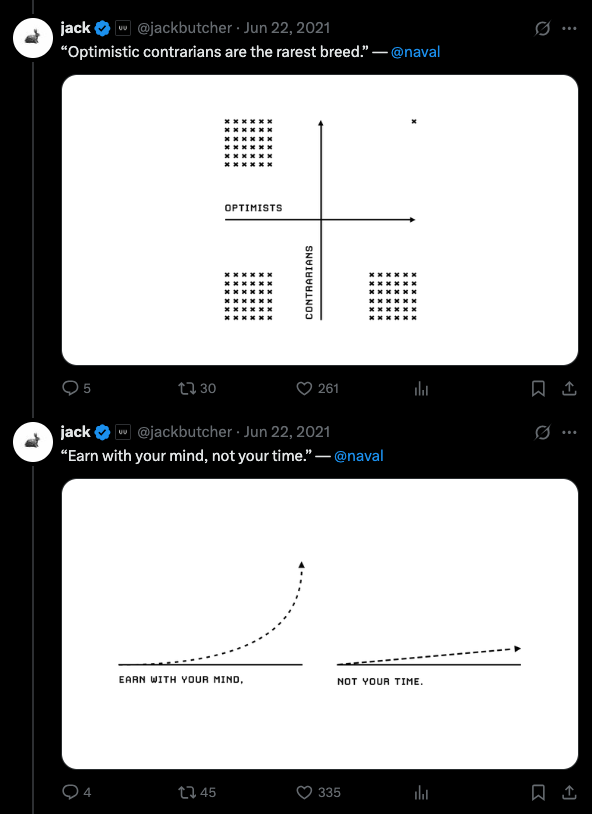

Jack Butcher’s onchain experiments Checks and Opepen
Butcher didn’t just create two of the most iconic NFT projects of the last few years, he used them as onchain experiments in internet culture.
Launched on January 3, 2023, Checks began as a 24 hour open edition mint priced at $8, a nod to Twitter’s then new verification cost. Butcher’s tweet at the time became a catch cry for the experiment, “This artwork may or may not be notable.”
Read also
The visual was simple: 80 multicolored checkmarks arranged in a grid. But beneath the surface, it was a statement on digital identity and decentralization.
Checks introduced a burn mechanism where holders could merge pieces to create scarcer editions, with the ultimate rare edition being a singular black check. In 24 hours, Checks saw 16,031 mints occur with the project taking over the crypto twitter timeline for attention.
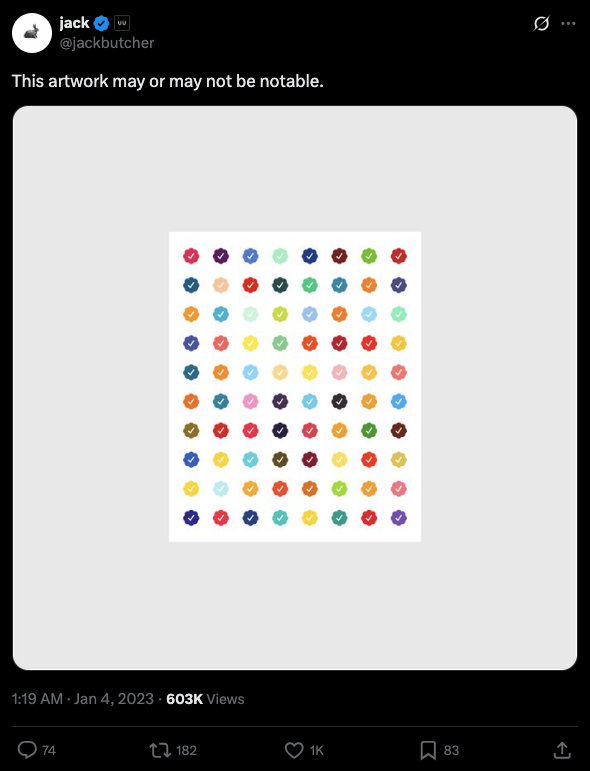

Just five days later, Opepen launched as a free mint. 16,000 editions inspired by internet and popular crypto meme, ‘Pepe’ and generative minimalism. Butcher introduced an opt-in model, where holders could actively participate in the reveal process of future “sets.”
“There’s thousands of hours and thousands of tweets that sort of contribute to the evolution of this thing. From the outside, all you see is the image. But the real artwork is the network effect, the conversation, the collective authorship,” says Butcher on Opepen.
At the heart of Checks is the idea that cultural legitimacy is no longer handed down from institutions, it’s earned, memed, and minted from the ground up. “The intention is for it to reference this sort of inversion of authority on the internet,” he says.
Both projects act as decentralized commentaries on how the internet now works and how it could evolve.
“People building consensus from the ground up, making a name for themselves, having a commercially viable art practice independently on the internet without needing a gallery or representation. I hope in a hundred years, that’s a thousand times more true than it is today.”
To date, Opepen has surpassed 87,000 ETH ($240M at current prices) in trading volume and remains one of the most active onchain experiments in NFT history.
Read also
Mint First, Research Later
In the traditional art world, artists spend months or years in isolation, hoping their work resonates after the fact. But in the NFT space, Butcher values immediacy.
“You really understand someone’s appetite for your thing if you let them buy. The internet as a medium uniquely affords that ability at zero cost to reach every person that is subscribed to your work and beyond, over and over and over again. It completely changes the art practice,” Butcher says.
It’s not just about the sale, it’s about the signal. With projects like Checks and Opepen, Butcher built in public, unveiling micro decisions as they happened.
“All of these little updates, you’re kind of reading and interpreting how things will be responded to. Even people explaining what you’re doing back to you in a better way than you ever could,” he says.
Butcher acknowledges the internet can be a brutal environment to compete in for attention and to receive feedback but has learned that transparency breeds resilience.
“Open sourcing the process gives you so much more surface area to talk about what you’re doing. What’s the alternative? Disappear into a basement for 12 months, come out, and nobody pays attention?”
Butcher also highlighted another point he’s been pondering with digital art.
“I think the other thing that’s generally underappreciated about digital art is people selling $1 worth, $10 worth, $100 worth. Most people who ever make art, ever put it out into the world, sell nothing. Zero.”
“I don’t have the exact statistics on this but I would be very confident that the amount of people that have gotten paid for artwork or making these digital objects on the internet far surpasses anybody practicing art in the quote unquote atomic world.”
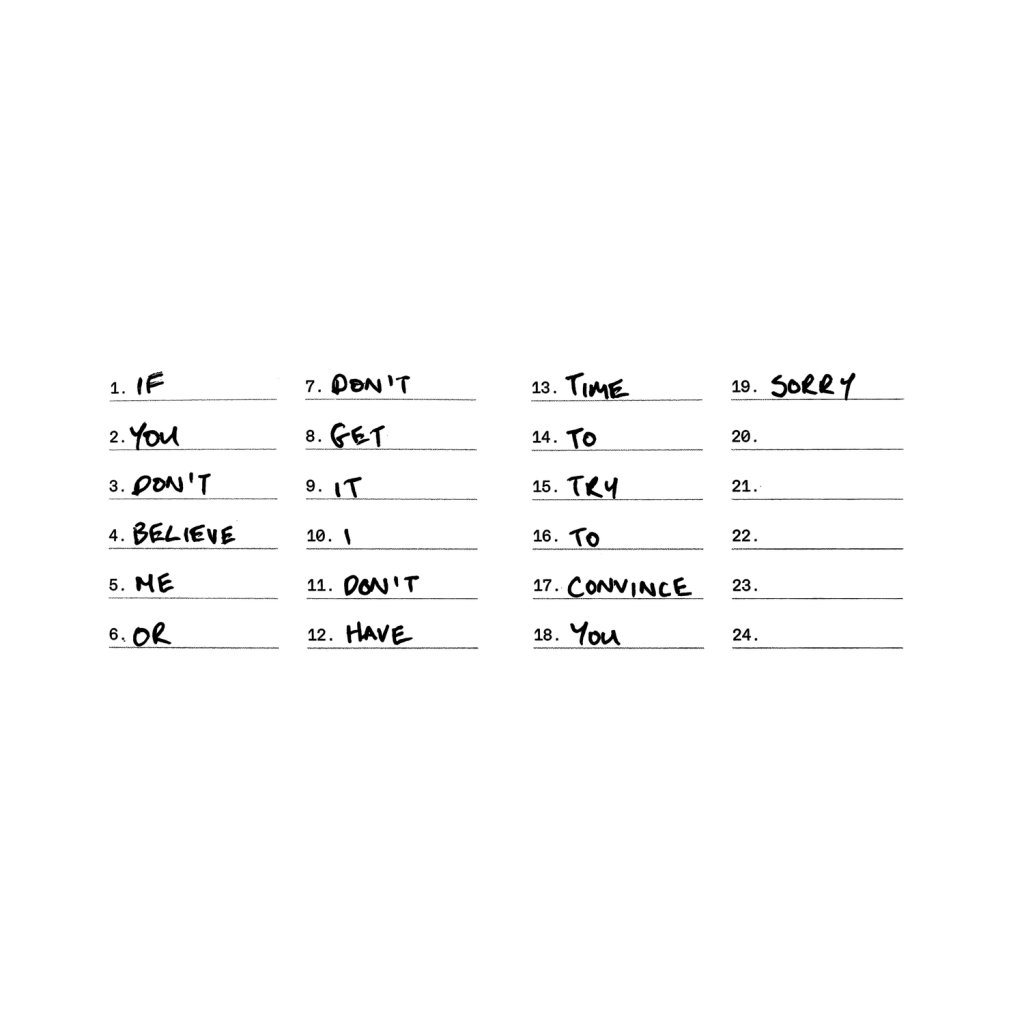

Jack Butcher on NFT royalties: “You have to lose a customer to make money”
Royalties are always a controversial topic amongst the NFT world. Butcher has a contrarian take.
“I have a controversial perspective on this. The idea of generating a royalty is like… you have to lose a customer to make money. You’re getting paid on churn,” he says.
For Butcher, the expectation of passive income through royalties can distort the creative process, encouraging artists to focus on trading volume instead of making new work. He describes the royalty boom of 2021 as a culture that rewarded frequency over originality.
“A lot of people ended up in these golden handcuffs, where the focus switches to how do I get the artwork that’s already out there to change hands without making new artwork.”
The result? The artists who needed royalties the most rarely saw them.
“Expect to get paid for the work you make, price reasonably, and keep building. The people who don’t need royalties get them. The people who need them don’t. It’s just a power law,” he says.
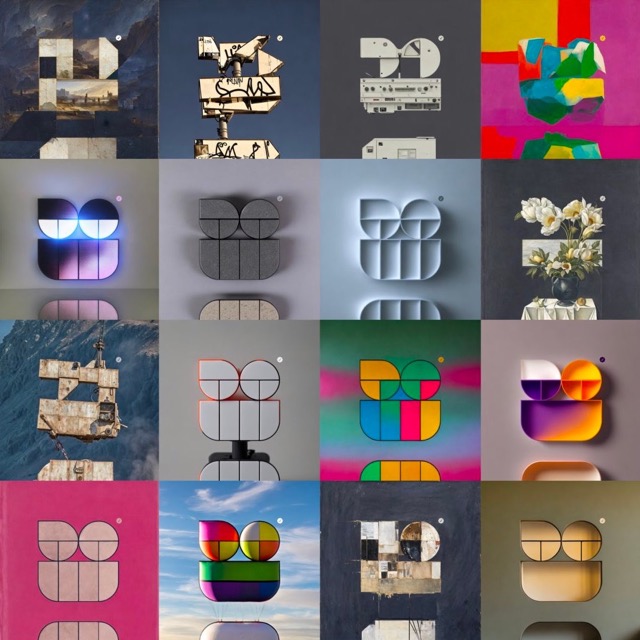

Rapid Fire Q&A with Jack Butcher
When did you mint your first NFT?
March 2021.
When did you buy your first crypto?
Bitcoin in 2017.
If you could only keep 3 NFTs forever, which ones would they be?
1. Piv: My favorite independent practicing crypto artist is a guy called Piv. He’s Belgian. I own his Genesis 1 of 1 which is called Six Marilyns which is this Warholian composition of six female crypto punks and colored appropriately.
2. I’d have to keep a single Check for sure.
3. For the third, it’d be a toss up between a CryptoPunk or a Squiggle.


Do you have a favorite collection or project when you put your collector hat on?
I think I would probably go Squiggles by Snowfro. There’s something about that collection that really demonstrates the beauty of the medium in a way that is not maybe not obvious at first, but as a designer, there’s something like the fact that it has turned into this fine art collection that is massively inspiring. I think Erick is one of the best we have in terms of advocates for what we’re doing here and has done a lot for the space in general.
What’s your favorite 1 of 1 art piece that you own?
My Piv piece – Six Marilyns
If you had to name three favorite artists of yours, who would they be?
1. diewiththemostlikes: He’s great. Also an Opepen set contributor
2. Joe Peace: He’s amazing
3. Piv: Piv is in all of my answers so I would put him up there too
What’s been your biggest NFT sale?
NFTs, explained. 74 ETH ($123,500 on date of sale). March 2021.
Do you have a favorite Naval quote?
“Be the best in the world at what you do. Keep redefining what you do until this is true.”
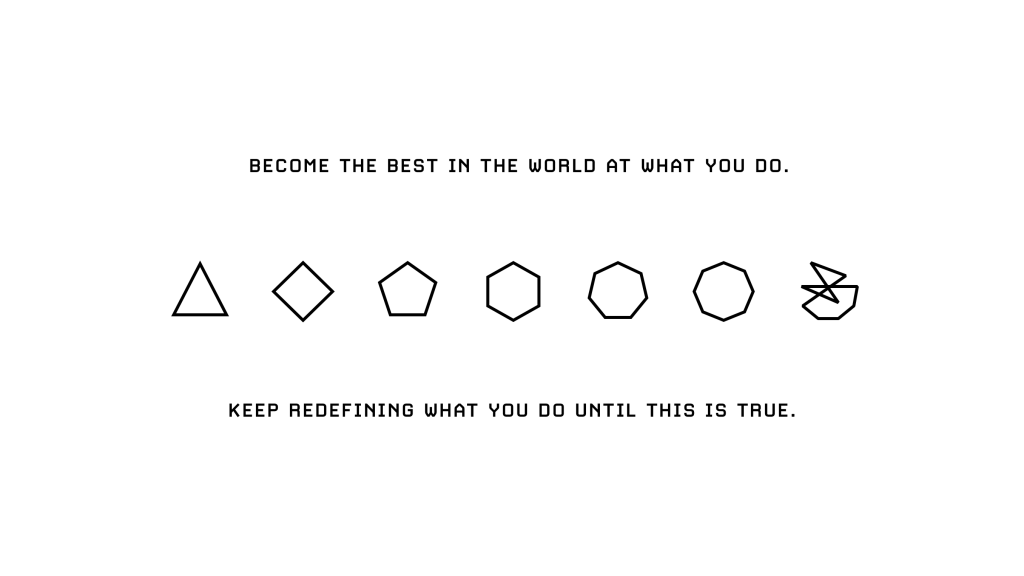

What would be your advice to any other aspiring digital artists that want to dip their toe in the water with NFTs?
I think it’s such a good time now that the euphoric bubble has blown over. It’s totally changed my life on so many different trajectories. Even if it had not played out the way it did the last few years, it gives you a really good understanding of how the internet works. I think just even participating in this ecosystem. My hunch is that the internet will look way more like what we’re doing now in the future than less.
Subscribe
The most engaging reads in blockchain. Delivered once a
week.


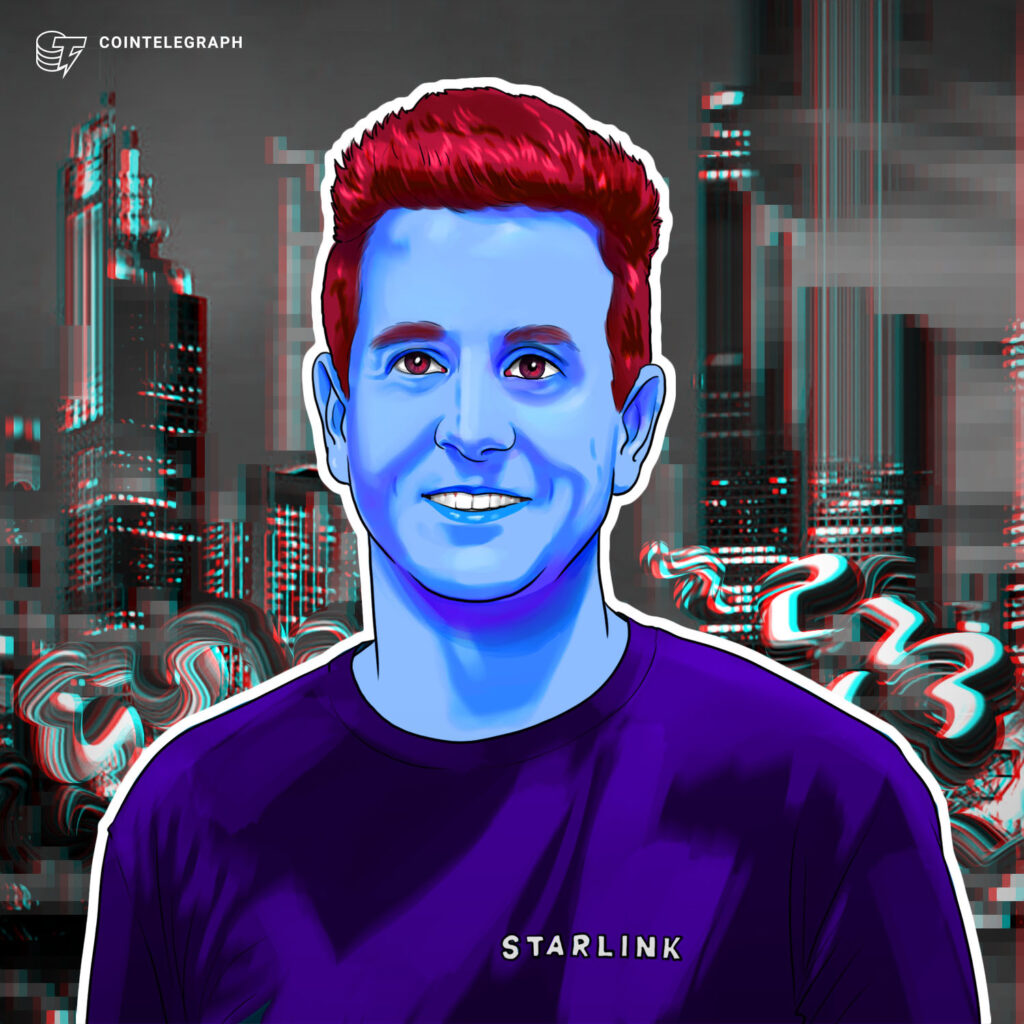

Greg Oakford
Greg Oakford is the General Manager for Upside DAO, a leading Australian crypto & web3 co-working hub and investment fund. He is an avid NFT collector and the co-founder of NFT Fest Australia. Prior to crypto, Greg was a marketing and sponsorship specialist in the sports industry working on professional events.

